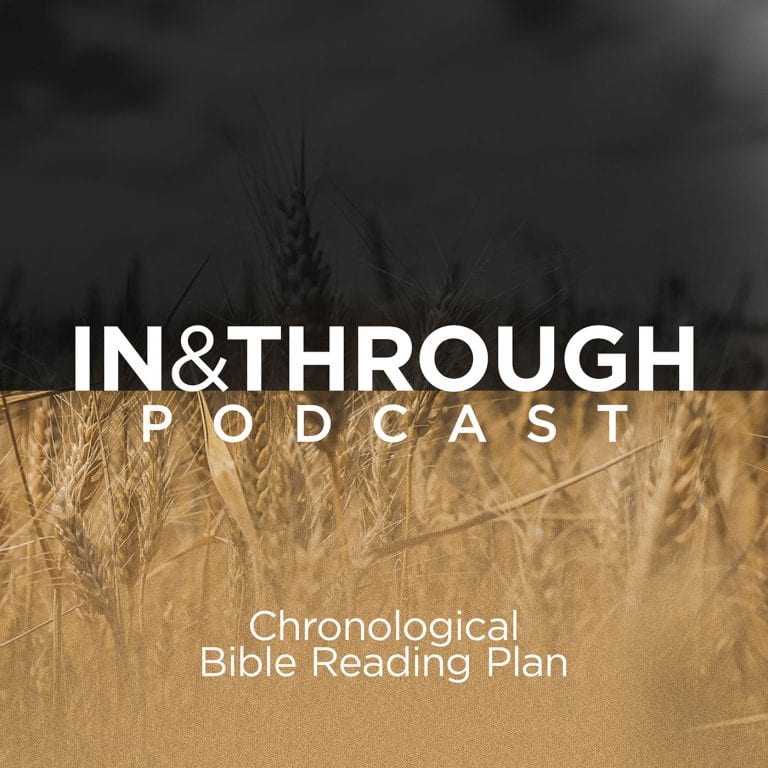Where does the Christmas story begin? Hopefully, by now most churches have already figured out how they are going to tell the Christmas story during this Advent season! While the order of the Advent sermons might be in the rearview mirror for most churches the reality is that many churches will find themselves asking this same question next year.
So where does the Christmas story begin? How can we design a Christmas sermon series that faithfully speaks to our congregations about the Messiah’s birth in a way that is faithful to scripture and captures people’s attention?
This year, the elders at our church found themselves asking these very questions. It was clear to us that we would be preaching about the fact that Christ is “Immanuel,” God with us. We would track this truth through the Old Testament prophecies about Christ, his birth narrative, and the promise of his return. It would culminate with a sermon tying it all together on Christmas.
Yet the fact that Advent has four weeks threw a wrench in that neat schedule. We had an extra week to begin telling the Christmas story. So where would we begin? Where does the Christmas story actually begin?
That’s also a question that many parents might not have given much thought about, especially as they recount the Christmas story to their kids. As they sit with their little ones around the Christmas Tree or on the couch on Christmas Eve they’ll begin with Mary and Joseph entering into Bethlehem (Luke 2:3-7), the annunciation (Luke 1:26-33), or if they are biblically astute they might begin with the promises of Jesus’s birth in Isaiah (e.g. Isaiah 9:6-7).
But is that where the story really starts? Is that really how we should be telling the Christmas narrative?
The Protoevangelium & Christmas
One place where we could begin telling the Christmas story is Genesis 3:15, what is often called the “protoevangelium.” In fact this is where some Christian confessions point us toward. For example, the 2nd London Baptist Confession says:
Because the covenant of works was broken by sin and was unable to confer life, God was pleased to proclaim the promise of Christ, the seed of the woman, as the means of calling the elect and producing in them faith and repentance. In this promise the gospel in its substance was revealed and made effectual for the conversion and salvation of sinners. (20.1)
Genesis 3:15 gives us a reason for the incarnation
Similarly, Charles Spurgeon pointed to how crucial this text is. He states:
“This is the first gospel sermon that was ever delivered upon the surface of this earth.” (Spurgeon, “Christ the Conqueror of Satan”)
Genesis 3:15 gives us a reason for the incarnation, what might seem like the first reason for the incarnation: a Son would be born to the Woman, one who would ‘bruise the head’ of the serpent. The incarnation was necessary for our salvation. Thus, telling the Christmas story should begin with our need for salvation.
But could we actually start further back than Genesis 3:15? Theologians as diverse as Athanasius and Jonathan Edwards thought so.
The Christmas Story in Athanasius
Athanasius begins telling the story of the incarnation with an account of how God created the world. He knows this will seem strange to his audience, so much so that he says, “Perhaps you are wondering for what reason, having proposed to talk about the Incarnation of the Word we are now expounding the origin of human beings.”[1]
Like many others, Athanasius would go on to say that Christ became incarnate for our salvation. He writes, “For we were the purpose of his embodiment, and for our salvation he so loved human beings as to come to be and appear in a human body.” But Athanasius doesn’t start his account of the incarnation with the problem of the fall. He believes that knowing why we were created explains why the Word was incarnate.
So Athanasius begins his classic text with an account of why God made humanity. God made humans in his image, says Athanasius, so that they would have “a share of the power of his own Word…that they might be able to abide in blessedness, living the true life which is really that of the holy ones in paradise.”[2]
Blessedness, for Athanasius, is found in union with God—brought about by the union of the divine and human nature in the person of Christ—that grants us immortality in God’s presence.
The Christmas Story in Jonathan Edwards
For Edwards the Christmas story is about the incarnation. Rightly so! But where does the rationale for the incarnation begin? For Edwards the logic of the incarnation doesn’t begin with an instrumental understanding of the incarnation. The Son is not incarnate merely to accomplish the goal of redeeming humanity from its sins. Certainly, Edwards would not deny that our salvation is a crucial reason for the incarnation! But that isn’t the whole story!
Edwards explains that, “The infinite love which there is from everlasting between the Father and the Son is the highest excellency and peculiar glory of the Deity. God saw it therefore meet that there should be some bright and glorious manifestation made of [it] to the creatures, which is done in the incarnation and death of the Son of God.”[3] He goes on to say that the infinite love of the Father is displayed in the fact that the Son became incarnate, forgiving “an infinite debt,” thereby returning us into God’s favor and enjoyment.
So, the incarnation which has the effect of bringing us back “into his favor and to his enjoyment,” is certainly part of a rescue mission. But the “why” behind the incarnation can’t be reduced to that purpose alone!
In Miscellany 121 Edwards grounds God’s purpose for incarnation in something more fundamental: God’s desire for communion with humanity. According to Edwards “Christ took the nature of a creature, not only because the creature’s love to him desired familiar communion with him, more familiar than his infinite distance would allow, but also because his great love to us caused him to desire familiar communion with us.”
Prior, in reasoning, to incarnation for the sake of rescue is incarnation for the sake of communion. God wants the deepest level of communion possible with us. How did God accomplish that? “He came down to us, and united himself to our nature.”[4] The story of the incarnation begins with God’s desire for communion with his creatures.
How do we tell the Christmas story?
Both Athanasius and Edwards believed that the fundamental rationale for the incarnation was not simply incarnation for the sake of saving humanity from its sins, rather, it was incarnation for the purpose of communion. As one contemporary theologian puts it, “To enable [humanity] to participate in the divine life God must take the initiative and unite himself with one of these creaturely natures, assuming it, and thereby generating an interface between divinity and humanity so that human beings may have a conduit by means of which they may be united God.”[5]
Both Athanasius and Edwards believed that the fundamental rationale for the incarnation was not simply incarnation for the sake of saving humanity from its sins, rather, it was incarnation for the purpose of communion.
How might this notion attested to in Scripture—that God became incarnate for the purpose of communion with us—shape the way we tell the Christmas story?[6]
As our church decided how we would tell the story through a sermon series we decided that we would actually begin with creation. Yes, our Christmas series began with Genesis 1 and 2!
The main idea was: “In the beginning God designed us for his presence.” This portion of scripture served as a prologue to the Christmas story. As I preached on this idea from Genesis 1:26-2:3 I described the intimacy involved in the creation of humanity. An intimacy, which Calvin explains, “testifies He is about to undertake something great and wonderful.”[7] I shared about the significance of God getting his “hands dirty,” so to speak, when creating Adam in Genesis 2:7.
I explained, how in light of canonical context and ancient near Eastern context this section of scripture testifies to the fact that humans were given a priestly task, commissioned to dwell in God’s presence, offering worship to him. I stressed the fact, noted by scholars like G.K. Beale, that as a temple God intended creation to be a place where God himself would dwell with his people. Genesis serves as the starting point for a deep truth of Scripture: that the big story of the Bible is the story of God being present with his people, whether it is in the Tabernacle, the Temple, and by his Spirit indwelling believers.
We were designed for presence. The incarnation, before it becomes the story of a rescue mission, is a story of God desiring to be with his people—Immanuel—in the most intimate way possible. Christmas begins at creation.
How do I share this truth with my kids? The truth is that I share it in the same way. Each morning as we open our chocolate advent calendars I ask my six and three year old daughters some questions. The conversation goes a bit like this:
Me: Why are we eating chocolate this morning?
Them: To get ready for the day Jesus was born.
Me: Why was Jesus born?
Them: To save us from our sin.
Me: Why else was Jesus born?
Them: Because he loves us and wants to be with us.
As they say that, I take them back to the creation story to set the Christmas story in its larger context. I explain, “God loved us so much that in the beginning He decided that He would live among us. And because of that he was born as a baby, just like you and me! He cried, he laughed, and even pooped just like you did when you were a baby!
Of course, unlike us he was perfect. He never sinned!
Because from the very beginning God wanted to live with us, He wouldn’t let sin keep us from living with him. Jesus grew up and offered himself as a perfect sacrifice. He took the penalty that we deserved for our sin. If we believe in him then we can live with him now and forever, just like he always intended.”
Where Will You Begin?
As you think about preaching through the Christmas story or sharing it with your kids, how will you begin? You would certainly be in good company—Athanasius and Jonathan Edwards—if you decided to start with the story of creation!
[1] Athanasius, On the Incarnation (Yonkers: St. Vladamir’s Seminary Press, 2011), 53.
[2] Athanasisu, On the Incarnation, 52.
[3] WJEO 13: Misc. 327a.
[4] WJEO 13: Misc. 121
[5] Oliver Crisp, “Incarnation without the Fall,” Journal of Reformed Theology 10: 219.
[6] Examples of texts that support this notion are Ephesians 1:10 and Colossians 1:16.
[7] John Calvin, Commentaries on the First Book of Moses Called Genesis. [https://ccel.org/ccel/calvin/calcom01/calcom01.vii.i.html]























